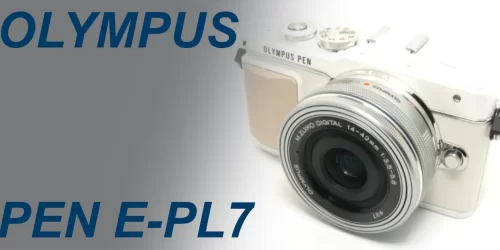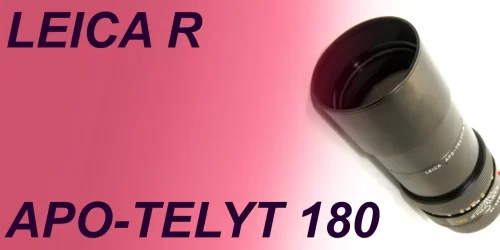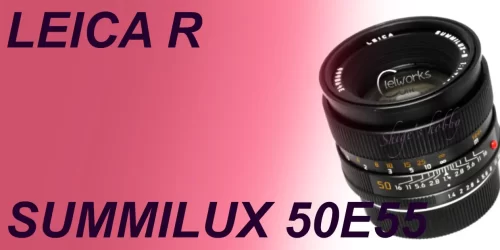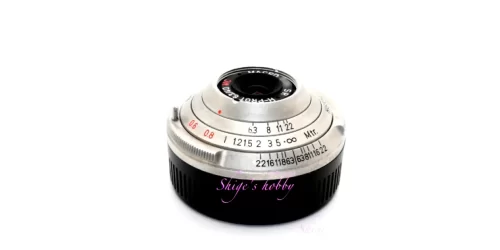A thick camera with a sliding cover
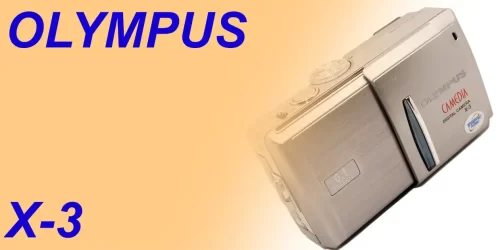
A review and photo examples of the OLYMPUS CAMEDIA X-3 compact digital camera.
Table of contents
Gallery
- The gallery photos are compressed data recorded in TIFF format.
Review
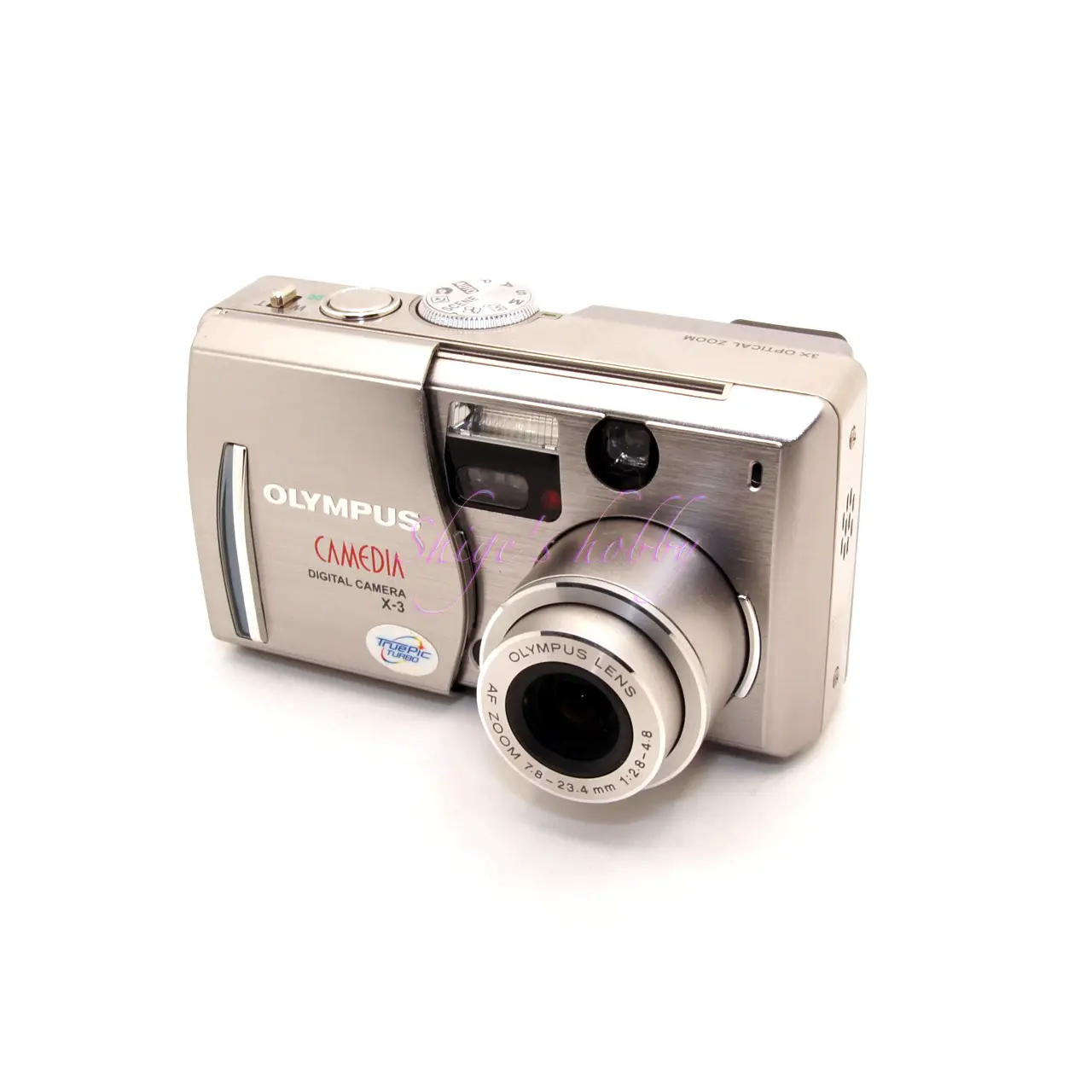
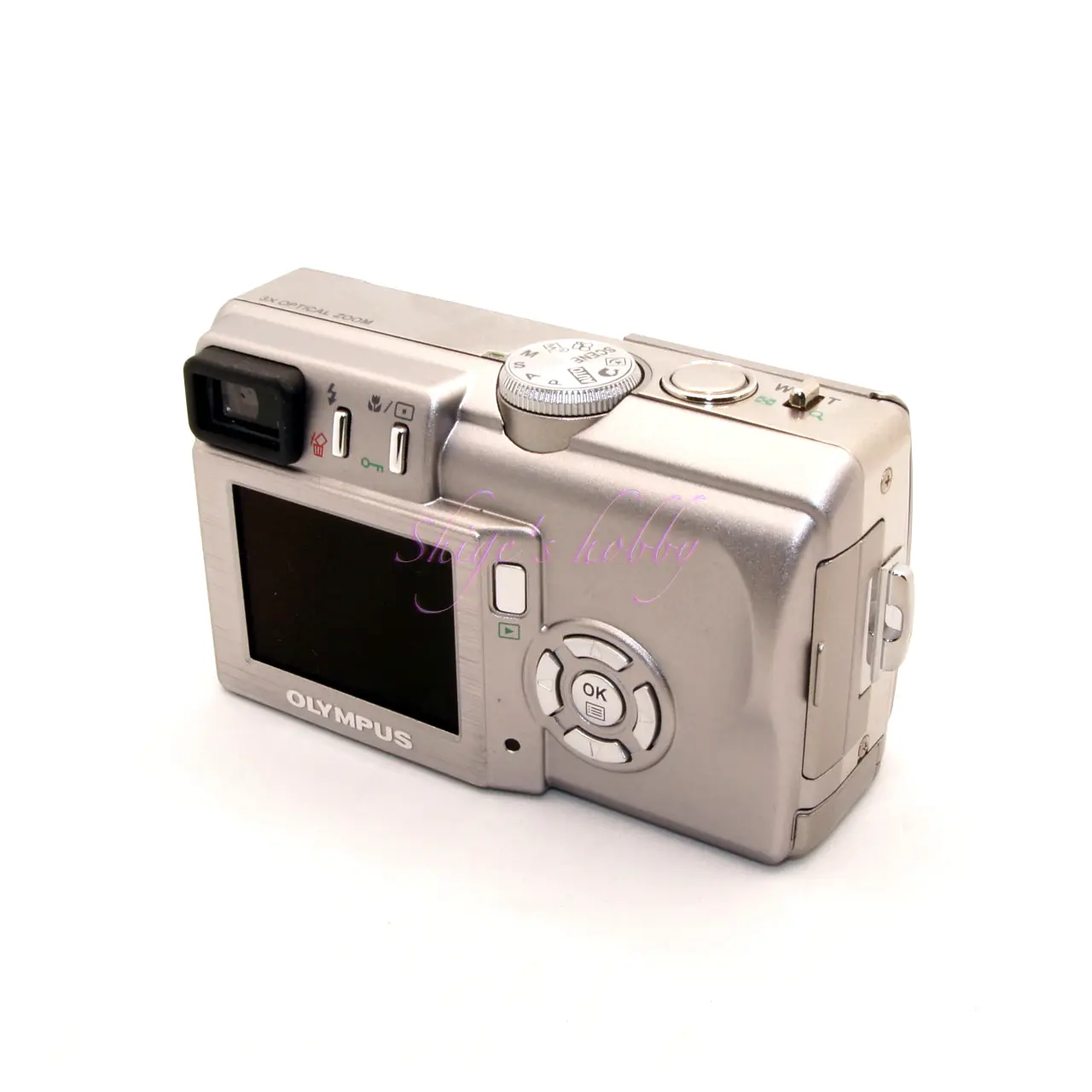
1.Overview
The CAMEDIA X-3 is a compact digital camera released by Olympus in 2004.
The detailed specifications are listed in the table below, but the main features are a 6.1 megapixel pixel count, a 1/1.8-inch CCD sensor, and a 3x zoom lens equivalent to 38mm-114mm in 35mm format.
The viewfinder is a zoom-linked, real-image, optical viewfinder, and you can only check the frame of the shot, so you can’t tell the focus from the viewfinder; you have to judge by the AF focus sound or check the rear LCD.
The recording sizes of the captured images are TIFF, SHQ, HQ, SQ1, and SQ2, and at full 6.1 megapixels, images are saved at 2816 x 2112 pixels.
The rear LCD is a fixed 1.8-inch, 130,000-dot LCD, and the battery is compatible with the LI-12B.
It is not compatible with the MASD-1 released by Olympus, which converts microSD cards to xD pictures.
The recording medium for captured images is an xD Picture Card, and OM-SYSTEMS support information states that support for large capacity cards is “-“, but it recognised the 1GB M-type xD Picture Card I had on hand, so it should support up to 2GB.
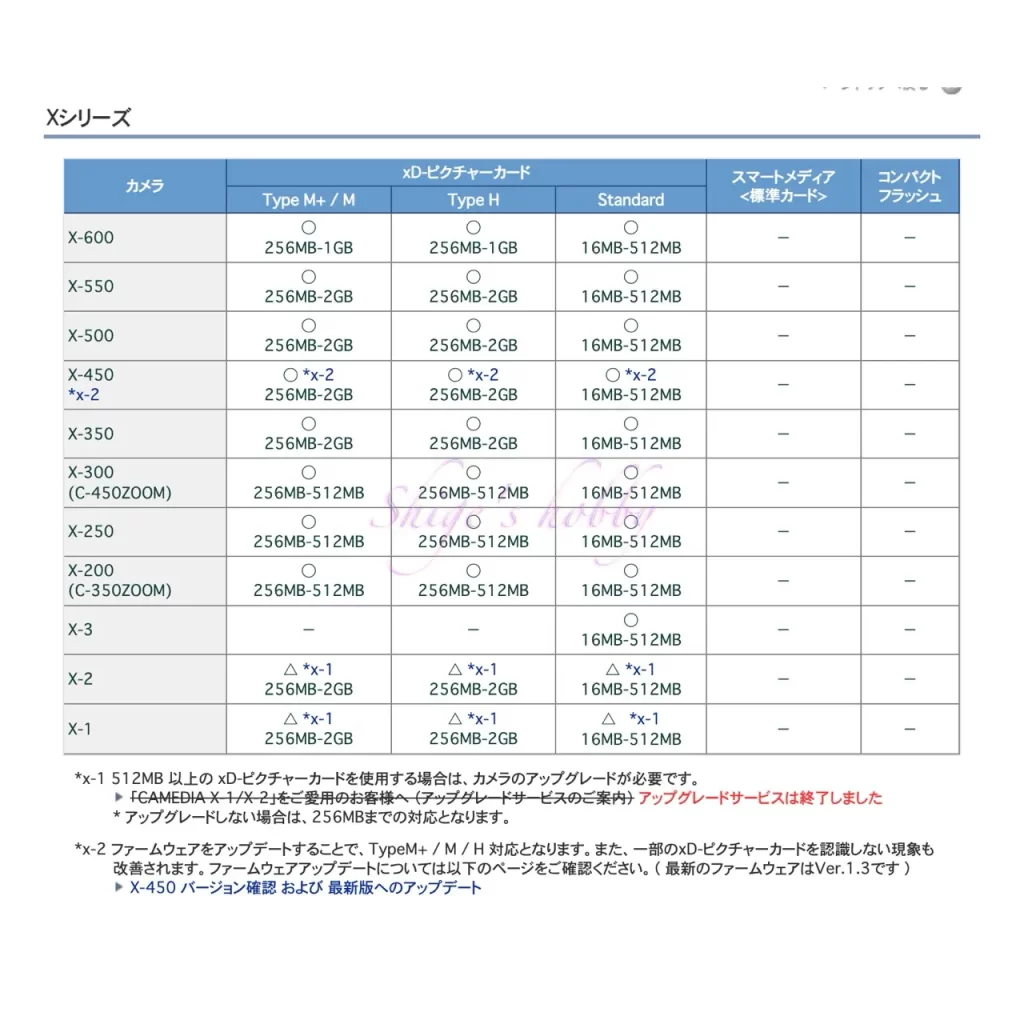
2.Usability
The CAMEDIA X-3’s styling is a chunky cuboid from before the trend for slim cameras, measuring 5.6cm x 10cm and 4cm deep, giving the impression of a fairly chunky camera. The camera is easy to hold, and the aluminum barrel and hairline finish on the surface are beautiful.
There is no power switch, but the power is turned on by sliding the slide cover, and turned off by sliding it the other way.
When sliding the cover to turn the power off, there is a slight resistance when you move the cover slightly to the left, but until you get used to it, you may slide it past that position and the lens barrel and cover will come into contact before the lens barrel is retracted, which is not a very pleasant feeling.
In particular, since the lens is not retracted into the camera while the shooting data is being written, care must be taken as there is a high possibility that the slide cover will come into contact with the lens barrel when trying to turn off the power.
I think it is better to close the slide cover after data writing is finished.
To change the focal length, use the protruding lever on the top of the body to zoom. The zoom lever has received a bad reputation in some reviews, but it’s not that difficult to use in practice.
Exposure compensation is easy to do, and can be changed by using the left and right cross buttons on the back, and exposure can be changed in 1/3 steps.
The up and down buttons are assigned to change the aperture in A mode and the shutter speed in S mode.
As mentioned in other reviews, the images captured are prone to overexposure, and suspicious light is recorded when backlit. As the wide-angle end is 38mm, image distortion is not noticeable in general photography.
Focus is only available with autofocus, and unfortunately manual focus control is not possible.
In terms of operation, it is annoying that the macro button and super macro are separated. Super macro is a function that can get as close as 4cm with a fixed wide angle, and is basically what you want to use when using macro. However, since super macro is located deep in the menu, super macro and image quality adjustment are registered as shortcuts that allow users to set only two functions of their choice in the menu.
I put image quality adjustment in the shortcuts because I basically shoot with SHQ, but when it’s important, I want to take uncompressed TIFF images. With SHQ, the image recording time is a few seconds, and TIFF is stored in a buffer and processed, but after a few shots the buffer reaches a plateau, so I always use SHQ because it’s not suitable for continuous shooting.
It is important to note that the camera settings such as image quality will be reset to the default settings unless you change the “Keep Settings” menu to “Yes”.
The menu is also a bit annoying because there are pages where you can select loops and pages where you can’t select loops.
The date setting in the menu allows you to change the second digit x and the first digit z separately for 20xz, so it is easy to reset the date when the date is reset when the battery is removed, which is common with old digital cameras. A camera that starts with the year the camera was released and changes it continuously from 20xz to 2025 is annoying every time you set the date.
As of 2025, compatible batteries for the LI-12B are on the market, so there should be no difficulty in obtaining them.
An ITmedia article that appears to have used a beta camera: Compact digital cameras headed for the 6-megapixel era — Olympus CAMEDIA X-3, published on May 10, 2004 at 9:00am states that “with 64MB media, the start-up time is just under 3 seconds, but with 256MB media it increases to about 5.5 seconds, and with 512MB media it takes nearly 10 seconds” (end of quote), but the start-up time is the same regardless of the media used with my camera, so the above bug was fixed at the time of release.
3.Add info.
The Olympus X series is a very misguided existence. The first X-1 was released at the same time as the X-2, which had a different sensor, and the announcement in the news release stated that production was discontinued, and it seems that only the initial lot of the X-1 was made. This is unfortunate as it feels like a camera made to get rid of half the sensor in stock.
The X-2 is almost the same as the X-3 except for the sensor resolution of 5 million pixels, and its basic performance has not changed despite the two-year gap.
The X-1 and X-2
The X-3 was the last camera in the X-1 digit series, and the X-3 digit series was introduced, but as the name became three digits, the camera’s positioning changed to be more suitable for beginners, and the number of pixels was limited to around 4 million.
Up until the X-550, it was a thick camera with a sliding cover like the X-3, but the last X, the X-600, changed to a slim camera, giving the impression that it was a misguided series from start to finish.
When the X-3 was released, it was advertised as a camera that “has a luxurious aluminum exterior body, and unlike the consumer model CAMEDIA μ DIGITAL series, it is packed with manual exposure functions and is designed to meet the needs of high-end users,” so it ended up being a bit of a disappointment.
Specification
| Items | X-1 | X-2 | X-3 |
| Zoom x | x3 | x3 | x3 |
| Focal length | 40~120 (7.8~23.4) | 38~114 (7.8~23.4) | 38~114 (7.8~23.4) |
| Lens Construction | 7 elements in 6 groups | 7 elements in 6 groups | 7 elements in 6 groups |
| Aperture | F2.8~F4.8 | F2.8~F4.8 | F2.8~F4.8 |
| Numbers of pixels | 430 | 500 | 610 |
| Sensor size | 1/2 | 1/1.8 | 1/1.8 |
| View Finder | Optical real image | Optical real image | Optical real image |
| Back LCD | 1.5 inch | 1.5 inch | 1.8 inch, 134k pixels |
| Battery | LI-10B | LI-10B | LI-12B |
| Recorded Media | xD Picture | xD Picture | xD Picture |
| Wight(g) | 194 | 194 | 198 |
| Size(mm) | 99.5 × 58.5 × 41.5 | 99.5 × 58.5 × 41.5 | 99.1 × 56.4 × 41.0 |
| Release date | 2002.11 | 2002.11 | 2004.4 |
| Body color | Silver | Silver | Silver |
| Price(Yen/No-tax) | 81,000 yen | 89,000 yen | Open Price 60,000 yen |
Options
- Remote control “RM-1”
- Waterproof protector “PT-024”
Reference links
- CAMEDIA X-3・Olympus News Release
- CAMEDIA X-2 and X-1 – Olympus News Release
- OM-SYSTEMS xD Picture Card Compatibility Chart
- Compact digital cameras are entering the 6-megapixel era — Olympus CAMEDIA X-3 Published on May 10, 2004 at 9:00 AM
- xD Picture Card M+ Introduction – ITmedia
- xD Picture Card M Introduction – ITmedia
- xD Picture Card H Olympus Official Release
- xD Picture Card Description – Wikipedia
Update history
- 2025.2.23
Affiliate links
- Olympus・Ads by Amazon
- Olympus books・Ads by Amazon
- OM SYSTEMS・Ads by Amazon
- MASD-1 ・Ads by Amazon
- LI-12B Compatible Battery・Ads by Amazon

